 |
||||
|---|---|---|---|---|
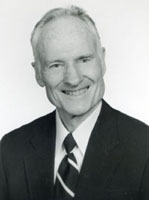 |
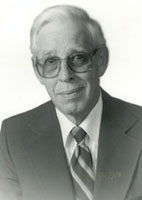 |
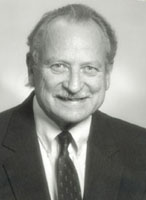 |
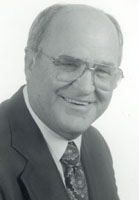 |
 |
| Ralph Cornell Dearborn Edsel Ford |
Don Elliott West Iron County |
Rod McEachern Lapeer |
Ed Moss Belding |
Wayne Tanis Hamilton |
 |
||||
|---|---|---|---|---|
 |
 |
 |
 |
 |
| Ralph Cornell Dearborn Edsel Ford |
Don Elliott West Iron County |
Rod McEachern Lapeer |
Ed Moss Belding |
Wayne Tanis Hamilton |
(click on Inductee's name to read 'description')
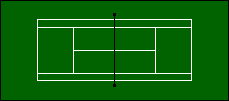
When Ralph Cornell was a junior at Hope College in 1948, he began playing tennis in order to spend more time with his future wife, herself an MIAA singles champion at that school. He continued to play while finishing his undergraduate degree at the University of Florida and while getting his MasterÕs Degree at Wayne State. By this time, his interest and expertise in the sport was such that he eagerly sought the tennis coaching position when he started teaching at Dearborn Edsel Ford.
According to Ralph, Edsel Ford is located in the blue collar neighborhoods of Dearborn. Thus, his kids did not have the advantages of the formal training that players from cross-town rival, Dearborn High School, could afford. In order to achieve success, Ralph modified a method employed by Jean Hoxie. Every year, he used his two personal business days to go into the junior high gym classes to teach tennis to the kids. On these days, he instructed six or seven classes in the rudiments of the forehand and backhand, all the while recording names and phone numbers of kids who showed promise. He then cajoled these kids into joining his summer program where he developed their skills and formed them into teams which traveled throughout the downriver area playing similar squads from Trenton and Ecourse.
By the time these kids reached high school, they were well trained and competitively experienced. Ralph used his matches against Dearborn High School as a barometer for his success. For years, he recalls, his kids would not win even a game against this traditionally powerful foe. Gradually, however, they started to not only win games but also sets, until finally a breakthrough point was achieved. Ultimately Edsel Ford triumphed over Dearborn and eventually went on to win 13 consecutive meets, a most satisfying win streak considering the history and the circumstances.
Ralph always maintained that if a team could beat Dearborn, it could play with almost anybody and then went onto probe the truth of this statement. From 1957-1981, his teams won almost 300 matches while dropping only 70. They also won 7 regional titles. Ralph achieved this through a combination of junior high recruitment, a junior high tournament in the late spring, and a summer program that grew in numbers and prestige. Ralph not only took his summer proteges to team matches, but introducted the first Dearnborn Open, a tournament which was sanctioned for many years. He also ran the Dearborn Closed in order to encourage intra-city play.
This "Hoxie method" of finding the best athletes, encouraging them to play tennis, and then working with them in an active, exciting, and obviously successful summer program, paid off. Once, when RalphÕs team returned from another successful meet, the kids found a varsity baseball game in progress on a nearby field. When the team went over to watch it, Ralph recalls one of his players observing: "You know, Coach, if it hadnÕt been for you, five of us would be out on that field right now."
Ralph retired from teaching and coaching in 1981, but still remains very active in tennis. He plays four days a week, runs a menÕs mixer at the Fairlane Racquet Club, organizes a travel team for the club, and teaches there one day a week under, ironically, one of his former players, Jeff Stassin. In addition, he still strings racquets in his basement, something he started years ago to save his playersÕ money. He credits Vic Braden, who in the 1950Õs was back in town to sell tickets for an upcoming professional match featuring Jack Kramer vs. Pancho Gonzales, with teaching him, in a quick ten minute lesson, how to hit a topspin backhand. Seemingly, his only concession to age is that he now hits that backhand with two hands.
RalphÕs enthusiasm for tennis has not diminished over the years. Like so many coaches from small, rural areas, he developed a strong program in an area that had no tennis tradition until he exerted his considerable influence. As such, he represents that "Coach, if it hadnÕt been for you" factor that separates great coaches from mere journeymen. For this and many other reasons, he richly deserves to be in the Michigan High School Tennis Coaches Hall of Fame.
Don Elliott once wrote: "As a coach, my contribution toward Michigan high school tennis has been 24 years of dedication to a sport I learned to love. How many coaches today would be willing to spend the long hours with little compensation that some of us endured?"
Many of us will nod our heads in appreciation of this statement. Indeed, Don typifies many who have labored for so many years "in a sport I learned to love." However, he is not a man who merely put in his time during these years. Even in 1956, when he took over the tennis job at the personal request of the principal (who was, incidentally, the former coach), he met with immediate success by capturing both the conference championship and the U.P. Final Tournament in spite of having had a losing dual meet season. Certainly, this man, who had already possessed fundamental coaching skills from his years directing football and basketball teams, learned the game quickly.
Don seemingly never looked back. In the ensuing years, his teams dominated the Menominee Range Conference which included such teams as Iron Mountain, Kingsford, Crystal Falls, Normay, and Niagara, Wisconsin. His Stambaugh teams captured five Class C-D titles, one Class A-B crown, two open class titles, and two Upper Peninsula Class C-D championships after Iron River and Stambaugh consolidated and become West Iron County High School.
However, Don didnÕt merely confine his efforts to winning championships. From 1957 to 1962, he managed the UP Class C-D Final Tournament for the MHSAA. While serving as director of the West Side Recreation Council in Iron County, he sponsored numerous tournaments for adults and kids. He was instrumental in getting tennis courts built in his home community of Caspian, which had none before he intervened. In addition, he was a charter member of the Michigan High School Coaches Association and served as its Upper Peninsula representative from 1957 until 1962. He attended several of the MHSTeCA clinics, no small feat given the distance he had to travel. He served on our associationÕs Board of Directors back in the days when it met at Houghton Lake. In 1978 and 1979, he was named U.P. Coach of the year.
DonÕs fame is also reflected in the accomplishments and abilities of some of his former players. He coached Steve Contardi who became a head professional in the Cincinnati and Lexington areas and was an engaging speaker at one of our previous clinics. He also coached Dennis Margoni, who went on to direct high school tennis at Flint Southwestern before he became the head professional at the Midland Community Tennis Center. There he gained great respect and admiration among high school tennis coaches as manager of Class A boys and giris state tournaments for many years. Two others, Bob Johnson and Jack Mascotti, went on to become teaching tennis professionals. Since West Iron County is not generally known as a mecca for tennis talent, to have such successful individuals claim this as the place where they learned the game is one more indication that Don has done an outstanding job.
Successful tennis coaching in the Upper Peninsula takes a special form of leadership and commitment. The distances teams have to travel, the inclement weather in which they have to play, the lack of court facilities and/or trained professionals, and the absence of a tennis tradition are just a few of the obstacles that many of them often have to contend with. Without dedicated coaches, tennis might not even exist and certainly not flourish in many of these areas. Yet, the U.P. has been blessed with a staunch group of individuals who have promoted and encouraged the sport in some unlikely locations. Don joins Mickey Johnson of Marquette and Gene Maki of Wakefield as Upper Peninsula Hall of Famers. He was the lifeblood of tennis in West Iron County for many years.
On the wall in DonÕs den is a beautiful plaque sent by the Michigan High School Coaches Association honoring 24-year contribution to high school tennis. We members of the Michigan High School Tennis Coaches Association are pleased, proud, and honored to add our own plaque to that den wall, symbolizing our appreciation for the outstanding work that he has accomplished for tennis in his community for so many years.
When, in 1959, Rod McEachern took over the boys tennis job in Lapeer, he had never played tennis. Athletic Director Jack Fitzpatrick asked him to temporarily fill a vacancy until he "could find somebody else who was qualified." 31 years later, Rod is being inducted into the Michigan High School Tennis Coaches Hall of Fame.
In those first years, Rod inherited a group of good athletes who were genial enough to teach him the game. He, in turn, stressed the conditioning that was such an important part of his training as a former football coach. He also devoured books and magazine articles on tennis, talked endlessly to other coaches, and provided the all-important will to win ("I donÕt like getting beatÕ). The result was a winning tennis tradition that has endured for three decades.
As with almost all successful coaches, Rod didnÕt confine his efforts to the springtime. During those early years in the 1960Õs, he would meet with his kids at 6:00 a.m. and work with them until 8:00 when he had to depart for his summer job. Eventually, he convinced the city to establish a summer program, which he ran from the late Ō60Õs to the late Ō70Õs. According to present athletic director Bill DesJardins, who was one of RodÕs players at this time, the community courts were monopolized by coach McEachernÕs programs in those days. All of this paid off in consistently winning Lapeer teams.
The high point of this success occurred in 1971 when RodÕs team, under the old format, won the state championship. That year, the team not only won the regional on the first day but qualified two doubles teams to the state tournament, one which reached the semifinals and the other, the quarterfinals. They captured enough points to win the state title, LapeerÕs only state championship in any sport and a wonderful achievement for the school and community.
More good things ensued, in part, because of this 1971 triumph. A benefactor donated enough money to build 6 new courts next to the school. Previously, the team had practiced and played on 3 courts located at the city park. In addition, All-Sports Community of the Flint area awarded Rod not only the title of tennis Coach of theYear several times but also its All-Sports Coach of the year award in 1972. It is interesting to note that he beat out Flint NorthernÕs basketball coach, Bill Frieder, for that honor.
RodÕs reputation grew to the point where his expertise was sought by MHSAA Tennis Commission, today known as the Tennis Committe. At that time, there was serious talk about revamping the state tournament format into our present flight system. Rod was one of the first to propose such a system, even though he had been a beneficiary of the old format of determining state championship teams. In fact, in 1973, Lapeer helped start the Metro League, the conference was one of the first to use the flight system to determine its champion, prompting several exploratory phone calls from Lansing. Groundwork and leadership provided by LapeerÕs coach helped pave the way for the present format.
In the ensuing years, Rod continued to produce winning teams and strong players who were not only USTA ranked but who went on to play college tennis at such institutions as Central Michigan, Kalamazoo College, Western Michigan, Arizona State, and Eastern Kentucky. He had the pleasure of coaching three of his own sons and oldest, Brian, went on to play at Taylor University. Several of his former athletics played on the satellite tour and/or are currently teaching professionals.
Rod helped accomplish all of this the old fashioned way. During the summer, he taught his kids the basics, encouraged them to practice, and took them to tournaments. He understandably laments the current state of developing tennis players which has been reduced to, in his words, "our indoor facility vs. your indoor facility."
Irma Gelhausen, an elementary principal in Lapeer whose son played for Rod, has called him" the guru of tennis in Lapeer." Indeed , after over thirty years, his name is virtually synonymous with the sport of tennis in this commmunity. Numbers of wins are not important to him although his teams have captured over 300 of them. Instead, he values the integrity and loyalty that he has always tried to instill in his players. One of his former players called it a privilege to know, learn from, and work with this man whose record speaks for itself. In return, it is the Michigan High School Tennis Coaches AssociationÕs privilege to bestow still another honor upon a man who richly deserves the best "thank you" that colleagues can give.
Once upon a time in the good old days (emphasis on the good, not the old), kids played a variety of sports. There was little thought, as there is today, of 12 month training in a single sport. Instead, a boy played football in the fall, basketball in the winter, and baseball, golf, and tennis in the spring and summer. Under these circumstances, there emerged from Cadillac in 1947, an athlete so gifted that he would not only make first team all-state in basketball but go on to earn money in five different sports. The splendid athletic career of Ed Moss includes being the starting center for Ferris State College, playing semi-pro football for the Flint Bulldogs, spending a summer as a member of the Detroit Tigers, and assisting as a golf pro at the Meadowood Golf Course. However, to the benefit of many of us, a fateful injury directed his life towards tennis.
In 1960, a back injury forced Belding baseball coach Moss to take a season off and during this recuperation period, the tennis coaching position at the high school became vacant. Having played the game as a youth with such pals as Dave Mills, who went on to play for MSU and Bill Jagger, who would become the first pro at East Hills Racquet Club in East Grand Rapids, Ed was very qualified to do the job. From 1961 to 1979, he repeatedly proved this, compiling a remarkable 381-105 record as boys and girls coach. During this time/span his boys won 270 dual meets against only 89 defeats (at one time, they put together a dual meet string of over 100 victories), captured 4 regional titles, recorded 6 second place finishes, and achieved a 4th place distinction at the 1978 state meet. From 1972-1978 his girls won over 100 dual meets against only 16 defeats, captured 5 Tri-River Conference titles in 6 years, took home 2 regional trophies, recorded 3 of those all-important second place finishes, and finished in 5th place at the 1976 state meet.
In the midst of all of this success, Ed had the pleasure of coaching his son and daughter, both fine players. His son Bob was not only a standout player for Belding High School, but went on to play for Aquinas College and Western Michigan University before becoming a teaching pro in Traverse City. His daughter, Janet, was an all-state for two years and played at Central Michigan University.
These achievements are impressive, but they are particularly noteworthy given the fact that when Ed started coaching tennis, the team practiced on only two courts at an elementary school. Eventually, because Ed was clearly developing a successful program, the community built 6 courts at a city park where coach Moss served as summer instructor for over a decade. The city fathers must have known that they should not pass up a great opportunity for kids. BeldingÕs teams not only won more than their share of tennis matches, but their coach also received more than his share of honors. Ed was, in 1977, both the Grand Rapids PressÕs Coach of the Year and our associationÕs Coach of the Year. In fact, in 1978, his best boys team voted him most valuable, a remarkable tribute.
Ed was so highly regarded that, in 1978, our association named him president-elect. However, in 1979, he decided to take advantage of the State of MichiganÕs attractive retirement program. This has enabled him to pursue tennis teaching full time, a second career that has taken him to professional positions at the Kalamazoo Racquet Club, Grand RapidsÕ West Hills Racquet Club, and the Lansing Racquet. He is currently head professional at East Hills Racquet Club. In addition, in 1989, the USTA appointed him to be a national tester ,which means that he determines if an individual is qualified to be a USTA pro. The Western Tennis Association recently bestowed a Distinguished Service Award upon this remarkable individual for 30 years of devoted service for this organization.
Although inclusion into the tennis coaches Hall of Fame is intended to enhance an individualÕs career, including someone of the stature of Ed Moss , also serves to enhance the award itself. Indeed, for many years the kids in Belding had an exceptionally gifted and qualified man as their tennis coach. In a sport where some schools cannot find a coach who knows which end of the racquet to hold, Ed was and is a proÕs pro who took his kids much further than they would have gone had he not been their coach. The positions that he has held since retiring attest to the fact that for 18 years in the Grand Rapids area benefited (and still do) from the services of an outstanding individual.
Wayne Tanis is no stranger to successful high school coaching. When he was HamiltonÕs head football coach, he was selected as the Holland SentinelÕs Coach of the Year in 1971. As HamiltonÕs varsity basketball coach, a position he currently holds, he was named that newspaperÕs Coach of the Year six times. In 1984, The Detroit Free Press named him the Class C basketball Coach of the Year after his team had won the state championship. In all, he has coached forty-two teams in sports other than tennis.
Why, then, is Wayne being inducted into the Michigan High School Tennis Coaches Hall of Fame? The answer lies in almost 28 years of successful and dedicated service to this sport in a community that would not have fielded a tennis team if Wayne had not offered to start one back in 1963. In fact, for 25 of these 28 years, he directed Hawkeye teams on only three courts until three years ago when the board of education finally constructed six new courts at the school. This was a long overdue reward for a man whose boys teams have won 232 dual matches against 147 defeats, all the while using less than superb facilities. During this time span, the team also has won 8 regional titles, finished in second place 3 times, and has made 8 consecutive appearances to the state finals since 1981. Prior to the team format, Hamilton also captured three regional championships. These are truly impressive numbers when one considers the "untennislike" nature of this small, rural Class C community.
Lack of facilities has always eliminated the possibility of hosting tournaments in Hamilton. However, this has not stopped Wayne. Using the courts in nearby Holland, he has directed his O.K. Blue Conference Tournament many times. In addition, Hamilton is the only Class C team to win the championship in a conference which consists of both Class B and C schools. In all, his boys have won 6 titles. Part of the reason for this success in the contributions WayneÕs three sons, each of who played No.1 singles for his father. The youngest, Matt, is currently playing basketball and tennis at Central Iowa University, WayneÕs alma mater.
Clearly, this man can coach. WayneÕs vast experience directing kids in other sports gave him a decided advantage over those who merely know how to teach forehands and backhands. Wayne also brought competitive high school tennis experience as a high school player at Zeeland and similar college experience at Central Iowa to his Hamilton tennis teams. Although he credits the nearby Holland summer program with developing many of his players, one cannot discount 28 years of expertise and continuity.
Opposing coaches have called Wayne a pleasure to coach against. He is clearly a hard-working individual whose kids are always prepared even though at times they may not be talented. WayneÕs kids always give a contest their best shot and never quit, a reflection of their coach. He is always pulling for them without being an obnoxious opponent. He knows the rules and both he and his kids operate within them. When you play WayneÕs team, you know you are going to have a tough match but there will be no annoying hassles.
In other words, Wayne epitomizes the kind of coach we not only would like to compete against but would also like to be. He is being inducted into the tennis coaches Hall of Fame in part because he has been able to get his kids to win matches under difficult circumstances for many years. However, he is also included in this exclusive group because of the example he sets for not only his own kids but for coaches as well.